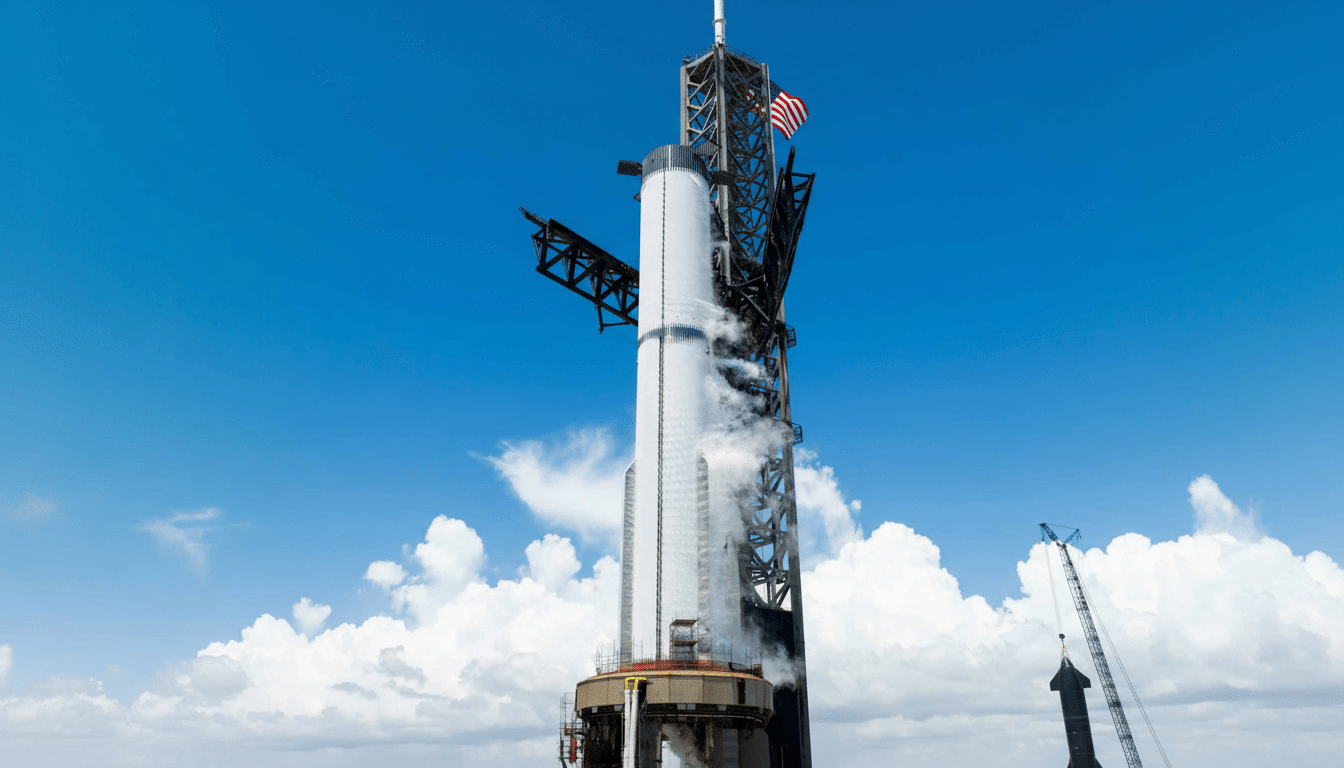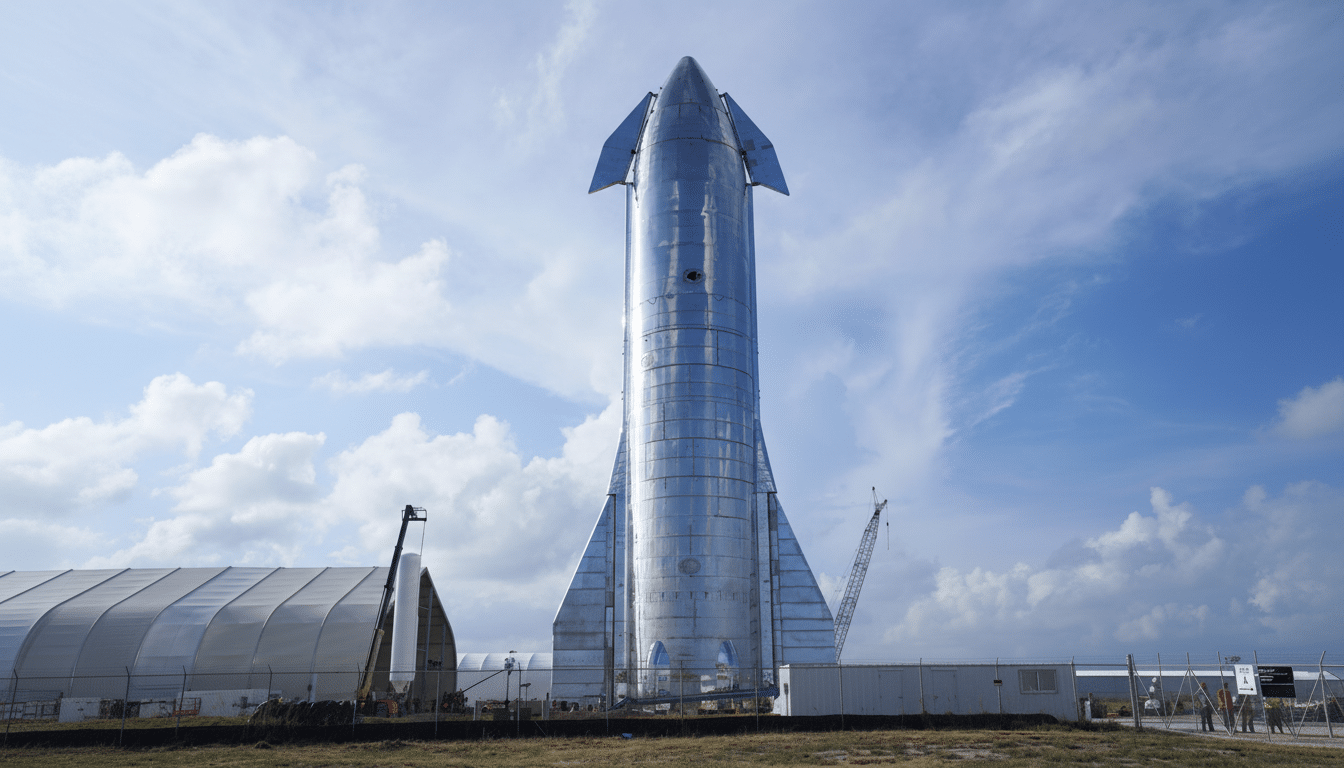SpaceX’s next Starship flight is loaded, fueled and ready to push the world’s most powerful rocket into a more demanding envelope.
The company plans another sea-landing experiment for the Super Heavy booster, as well as a more severe test of the ship’s heat shield and a fresh banking profile as it re-enters, culminating with a targeted splashdown in the Indian Ocean.

The stakes are significant. NASA is relying on Starship to carry astronauts to the lunar surface — under a multibillion-dollar Human Landing System contract — even if engineers are still proving out basics of precision booster recovery, on-orbit engine relights and thermal protection at orbital speeds. Starship, at roughly 400 feet tall and carrying some 10 million pounds of liquid methane and oxygen on the launch pad, is a super heavy-lift outlier in size and sophistication.
What SpaceX Is Trying to Achieve With This Flight
The booster will test out an ocean recovery profile that gets tested in midair. Instead of returning to the shore, Super Heavy will perform a controlled descent into the Gulf of Mexico for tests involving water impact dynamics, engine gimbal authority at low altitude and aerodynamic forces on a steep terminal dive.
Engine control is key to the booster test. The 24-engine vehicle is designed to conduct ascent and landing tests with as many as 24 Raptor engines, intentionally transferring thrust between clusters of engines during the descent. SpaceX is looking for data on controllability, vibration through the thrust structure and how the powerplants respond to rapid throttle and ignition changes — key information if future flights feature more engines for redundancy and precision.
Upstairs, the ship is planning to roll through a payload-bay demonstration, releasing eight mass simulators that are doppelgängers in size and handling of Starlink satellites. An in-space engine relight is conducted, adding further confidence for possible deep-space engine burns. The way back is the most brutal, with teams having pulled off tiles for margin testing to study tile loss modes and validate heating models while flying a bank maneuver that increases cross-range control prior to the planned Indian Ocean splashdown.
Why These Experiments Are Important for Reuse
Precision re-entry is also vital to Starship’s business model. SpaceX ultimately plans to catch Super Heavy on the launch tower’s “chopstick” arms, a change that would eliminate downrange barges and compress turnaround time. Before it dares attempt any high-wire catches, the company has to get more information on how engine-out performance, grid-fin authority and burn timing come together to deliver a bullseye. Falcon 9 took a similar route: years of splashdowns and barge landings before we reached today’s normal pad returns.
Just as significant are the heat-shield installations. At its hottest, during re-entry into Earth’s orbit, peak heating can top 1,400 degrees Celsius (or more than 2,500 degrees Fahrenheit), and even small tile imperfections can multiply to cause serious damage. NASA’s human-rating requirements are going to require a large margin and repeatable performance. Though the lunar lander variant won’t be reentering Earth’s atmosphere at orbital speed, future Mars return missions will, and this tile, seam and carrier-panel data is critical for these interplanetary aspirations.

The remaining milestones on Starship’s path to lunar landings
In-orbit propellant transfer is the primary technical gate in front of a crewed lunar landing. The present architecture calls for multiple refueling flights to fill a depot and the lander, which NASA’s plan — as well as the U.S. Government Accountability Office — has identified as a schedule risk. SpaceX will also need to show it can do pinpoint landings on solid ground and, eventually, a controlled descent to the Moon’s cratered south polar terrain.
The last Starship flight completed a veritable checkoff list of tasks: smooth liftoff, controlled splashdown in the Gulf by the booster, successful engine refire by the ship and disciplined reentry to an ocean landing. SpaceX’s launch commentators said the team deliberately took heating “out to its maximums” beyond nominal in order to map the edge of the envelope. This mission increases the difficulty of those tests, with more-stringent thermal margins and more-complex guidance steering.
How to watch the launch and what to expect on flight day
SpaceX usually offers a live webcast on its website and social channels, which generally starts about 30 minutes before liftoff.
- Assume the schedule is not rigid; cryogenic propellant loading, engine chilldown and range coordination tend to drive late adjustments.
- The broadcast typically features live telemetry, hot-staging booster-ship separation views and splashdown updates.
Liftoff creates the trademark shock-and-dust combination plume from the launch pad and hot-staging just moments after first-stage engine cutoff. Assuming all goes according to plan, viewers will see grid fin steering during the booster’s descent, a quick landing burn over the Gulf of Mexico, a payload deployment demonstration in orbit and a long reentry corridor terminating over the Indian Ocean.
After splashdown, the intensive data work begins in earnest
Telemetry, onboard recorders and downrange recovery teams will pump petabytes of data into postflight analysis. Engineers will compare structural loads, engine signatures and thermal measurements to preflight models and make changes as needed in the software, tile patterns and cause-and-effect sequences that govern how engines for the next build will be started. The Federal Aviation Administration supervises mishap reviews in cases of anomalies, and environmental surveillance keeps an eye on splash zones to confirm the absence of hazards.
For SpaceX, half a glass is better than none. Even if some of those milestones are missed, each test tightens the loop between design and flight, inching Starship closer to rapid, full reuse — a leap that could transform how NASA explores the Moon and, ultimately, how crews venture onto Mars.

